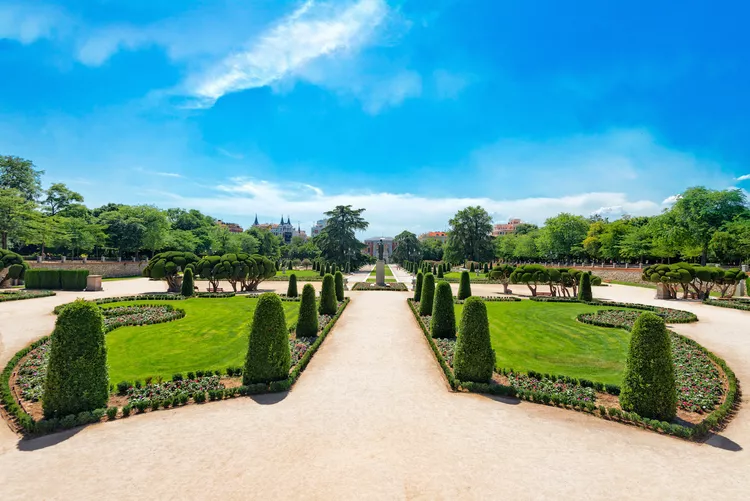Summary
With dozens of lush parks and gardens scattered throughout the city, Madrid has firmly established its reputation as Europe’s greenest capital. The pleasant Mediterranean climate and abundant sunshine make it easy to enjoy these beautiful spaces year-round.
The most renowned of all parks in Madrid is Parque del Buen Retiro, often simply called Retiro. Comparable in size to London’s Hyde Park, there’s no lack of attractions to explore in this vibrant green area. Here’s what you need to know about Retiro Park to experience it like a local.
History of Parque del Buen Retiro
Today, millions of visitors from around the globe — from various walks of life — enjoy Retiro’s natural and cultural beauty. However, this was not always the case; when the park was established in the mid-17th century, it was a private sanctuary for the Spanish royal family, gifted by the Count-Duke of Olivares to King Philip IV.
The peaceful park transitioned from the monarchy to municipal ownership in the 19th century and was opened to the public in 1868, allowing international visitors to immerse themselves in its beauty ever since.
The park features a historic Mexican cypress tree planted in 1663, which stands today as the oldest tree in Madrid. Additionally, the iconic manmade lake has remained part of Retiro since its inception, originally serving for royal reenactments of naval battles, with King Philip IV often taking part.
Large Lake
Returning to the famed lake, known as the “Large Lake,” it serves as one of Retiro Park’s most recognizable symbols and an essential photo opportunity in Madrid.
Visitors can rent rowboats to relax under the sunny Madrid skies while taking in the views of the historic monument that graces the top of the lake. This enjoyable activity is popular among families and tourists, making it an ideal way to unwind in the heart of Spain’s bustling capital.

Palacio de Cristal
Despite its classic wrought iron architecture giving it an ancient air, the Palacio de Cristal (Glass Palace) is one of Retiro’s more modern features, having been constructed in 1887 for that year’s Philippine Exhibition. Originally used as a greenhouse, it now houses fascinating artistic and cultural exhibitions while offering stunning views as sunlight filters through the glass.

Rosaleda Rose Garden
Featuring over 4,000 stunning roses from across Europe, Retiro’s exquisite rose garden reaches its peak in May and June when the flowers are in full bloom. The enchanting fountain and neatly trimmed hedges along the pathways evoke the charm of a fairy tale garden. Additionally, don’t overlook the nearby Fallen Angel statue, one of the park’s most intriguing yet controversial attractions, depicting Satan.

Getting There
Conveniently located just east of Madrid’s city center in a quieter residential area, Retiro Park is easily accessible. The compact nature of Madrid’s central zone allows for leisurely walks, with iconic spots like Gran Vía and the central Puerta del Sol plaza each being a pleasant 20-minute stroll away.
Alternatively, if walking seems too taxing after a day of exploring, public transport is a convenient option. Simply board metro line 2 to the Retiro station, situated directly in front of the park.
Things to Do Nearby
Retiro Park is just one of many attractions in Madrid that make the city worth visiting. It is a short walk from some of Madrid’s most renowned museums: the Prado, the Thyssen, and the National Archaeological Museum.
If you prefer outdoor exploration, exiting the park via the northwestern corner leads you to Puerta de Alcalá, a magnificent 18th-century gate that once served as the city’s main entrance. From there, proceed along Calle de Alcalá, which will lead you to Gran Vía, the most iconic street in Madrid and home to several picturesque buildings.





